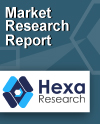
Germany Organic Food Market Size And Forecast, By Type (Fruits & Vegetables, Prepared Food, Dairy, Bread & Grains, Meat, Fish & Poultry, Beverages) , And Trend Analysis, 2015 - 2025
- Published: March, 2018
- Format: Electronic (PDF)
- Number of pages: 50
- Industry: Food & Beverages
Table of Contents
Chapter 1. Executive Summary
Chapter 2. Methodology and Scope
2.1. Research methodology
2.2. Assumptions
2.3. List of data sources
Chapter 3. Introduction
3.1. Research scope & market segmentation
Chapter 4. Germany Organic Food Market Trends: Drivers & Opportunities
4.1. Key industry trends
4.1.1. Market drivers
4.1.2. Market restraints
4.2. Supply Chain
4.3. Porter's Five Forces analysis
Chapter 5. Germany Organic Food Market Trends, By type
5.1. Germany organic food market movement, by type, 2017 & 2025
5.1.1. Fruits & Vegetables
5.1.1.1. Market estimates and forecast, 2015 - 2025 (USD Billion)
5.1.2. Prepared food
5.1.2.1. Market estimates and forecast, 2015 - 2025 (USD Billion)
5.1.3. Dairy
5.1.3.1. Market estimates and forecast, 2015 - 2025 (USD Billion)
5.1.4. Bread & grains
5.1.4.1. Market estimates and forecast, 2015 - 2025 (USD Billion)
5.1.5. Meat, fish & poultry
5.1.5.1. Market estimates and forecast, 2015 - 2025 (USD Billion)
5.1.6. Beverage
5.1.6.1. Market estimates and forecast, 2015 - 2025 (USD Billion)
Chapter 6. Competitive Landscape
6.1. Competitive landscape analysis, 2017
6.2. Strategic framework
6.3. Company profiles
6.3.1. Denn's Biomarkt
6.3.1.1. Company Overview
6.3.1.2. Product Benchmarking
6.3.1.3. Financial Performance
6.3.1.4. Recent Initiatives
6.3.2. HiPP GmbH & Co. Vertrieb KG
6.3.2.1. Company Overview
6.3.2.2. Product Benchmarking
6.3.2.3. Financial Performance
6.3.2.4. Recent Initiatives
6.3.3. Alnatura Produktions- und Handels GmbH
6.3.3.1. Company Overview
6.3.3.2. Product Benchmarking
6.3.3.3. Financial Performance
6.3.3.4. Recent Initiatives
6.3.4. Rewe Markt GmbH
6.3.4.1. Company Overview
6.3.4.2. Product Benchmarking
6.3.4.3. Financial Performance
6.3.4.4. Recent Initiatives
6.3.5. ALDI Einkauf GmbH & Co. oHG
6.3.5.1. Company Overview
6.3.5.2. Product Benchmarking
6.3.5.3. Financial Performance
6.3.5.4. Recent Initiatives
Choose License Type
Research Assistance
Steve Cooper
Research Support Specialist, USA
steve@hexaresearch.com
- Phone: +1-408-342-1548
- Toll Free: +1-800-489-3075
- Email: sales@hexaresearch.com
- World's largest premium report database
- Transparent pre & post sale customer engagement model
- Unparalleled flexibility in terms of rendering services
- Safe & secure web experience
- 24*5 Research support service
